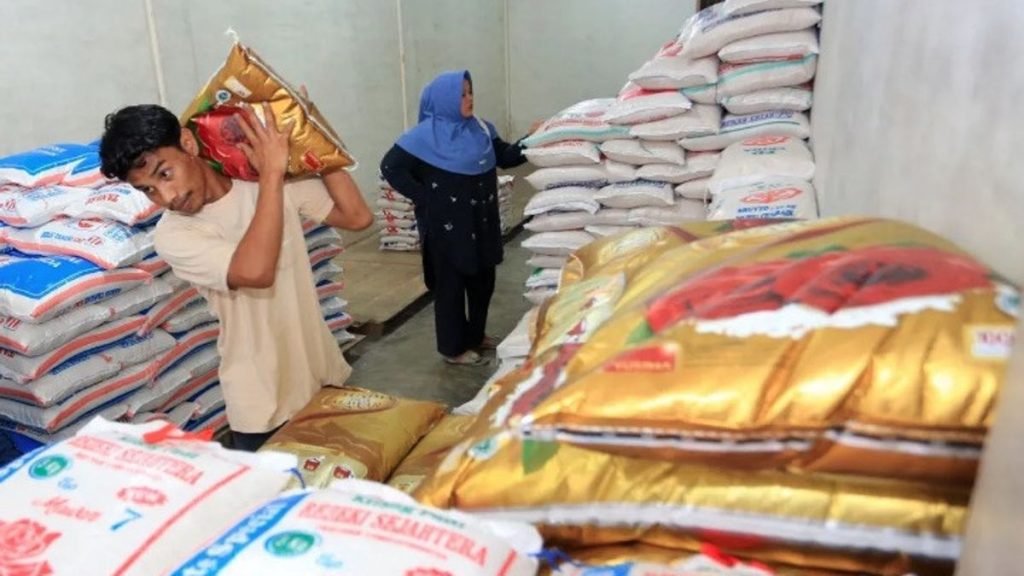Tags
The Elimination Of Premium Rice And Merta Responds To The Chaos Of The World Of Rice

The government’s discourse to simplify the classification of rice into general rice (regular) and special rice has the potential to make it more difficult for the poor to reach rice.
The government, through the National Food Agency (Bapanas), will simplify the classification of rice. This step was taken after the authorities found mixed rice in the market.
Previously, the distribution of rice classes was based on quality, namely premium rice, medum rice, submedium rice, and broken rice. Of this type of rice, only medium and premium rice is regulated by the government’s highest retail price (HET).
With this simplification plan, it means that in the future there will be no more medium and premium rice, but uniformly into general or regular rice. Meanwhile, the classification of special rice is maintained.
The government will determine the quality parameters and price of general rice in the near future. However, this plan was highlighted by a number of experts. The determination of the quality and price of public rice is very crucial to have an impact on the community. One step, it is not impossible to increase the number of poor people because rice prices are increasingly difficult to reach.
Recently, the community was shocked by the circulation of mixed rice in the market. Minister of Agriculture Andi Amran Sulaiman said that the findings of mixed rice began with an anomaly in rice prices about one or two months ago.
At that time, rice prices in the market tended to rise, right at the farmer level and the milling fell. The Ministry of Agriculture then checked 267 rice brands in the 10 largest rice-producing provinces throughout Indonesia and the rice samples were examined in 13 laboratories.
For premium rice, the ministry checks 136 brands. The findings show that there are 85.56 percent of premium rice whose quality is not appropriate. While 59.78 percent did not match the Highest Retail Price (HET), and 78.14 percent did not match the packaging weight.
The circulation of mixed rice that is troubling the public has finally prompted the government to remove the classification of premium and medium rice, into general rice or regular rice.
For the highest retail price, public rice will still be regulated by the government as an upper limit on the market. The price of special rice is not regulated by the government, but business actors must hold a certificate of the special rice brand.
So far, the government is still working on prices and parameters for the quality of general rice.
“These two things must be carefully regulated. The decision must be thorough and we are preparing this. Maybe in the near future, we need to hold one more coordination meeting (limited coordination meeting),” said Head of Badanas Arief Prasetyo Adi.
An agricultural observer from the Indonesian Political Economy Association (AEPI) Khudori said that the simplification of classification did not necessarily solve complicated problems in the expansion sector. On the contrary, it has the potential to create new inequality.
“Is it true that premium and medium rice is a way out of ‘symptomatic’ in today’s world of extortion? What are the implications of this plan if it is really executed? What alternatives are available that can be chosen?” said Khudori in a statement to VOI.
According to Khudrori, the expansion policy is not easy because it involves nearly 285 million consumers, whose rice contribution reaches 5.20 percent of the total family expenditure, even reaching 25.87 percent for the poor.
The removal of the quality class of rice could be detrimental to most people, especially the lower middle class. So far, consumers still have a choice between more affordable medium rice and higher quality premium rice. If that choice is removed, low-income people can be encouraged to buy rice at a higher price. According to data, when the price of rice rose 10 percent, poverty would rise 1.3 percent.
“Those who are only a few squares above the poverty line can be new poor,” he said.
“Meanwhile, for the upper middle class who consider the quality of rice compared to its price, it will be harmed because the choice is limited,” said the Coordinator of the Food Sovereignty People’s Coalition (KRKP) Said Abdullah.
“The government needs to be careful in also setting the criteria so that they are affordable by the lower groups, then also do not harm the upper group,” he said.
In addition, Khudori also asked the government to be aware of other things, namely in terms of small-scale rice milling business actors. Based on government data, there are more than 169,000 rice mills in Indonesia, but more than 90 percent are small milling businesses that are unable to produce high-quality rice according to premium standards.
“Small rice milling is unable to produce good quality rice at low cost, high yield loss, many broken grains, low rendement, and unable to produce rice with high hygiene,” he said.
“On the other hand, large rice mills, especially those integrated, can produce good quality rice at a lower cost,” Khudori added.
He did not deny that the expansion policy was always complex because it involved many parties, ranging from rice farmers, mills, traders, to consumers. For this reason, he encourages rice changes such as the elimination of rice quality classification to be done with careful calculations and sufficient transition time.
“This does not mean closing your eyes on the violations that have occurred. What has happened, please take action according to violations. But on the other hand, there must be an effort to introspect and correct unfair policies that encourage irregularities to occur,” he concluded.
https://voi.id/en/bernas/501757Published Date: August 4, 2025






